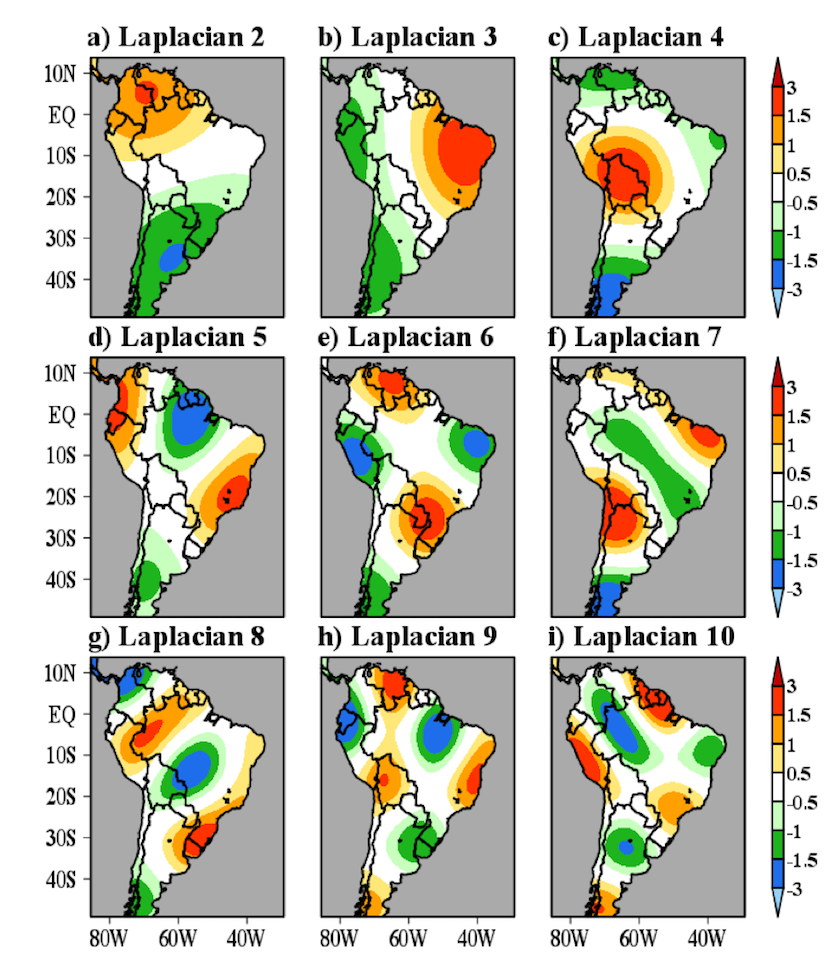Friday January 26 CSL Meeting
Jan 25, 2018 - CSL

Dr. Rodrigo Bombardi
Seasonal Predictability of Summer Rainfall over South America
Presenter: Rodrigo Bombardi
Time: Friday, 26 January 2018, 1:45-2:45 p.m.
Location: 805 O&M
Abstract: We evaluate the seasonal predictability of the austral summer (December through February - DJF) rainfall over South America using seasonal simulations performed as part of the projects: Minerva (Cash et al. 2017) and Metis (in progress). We analyze a set of 7-month retrospective forecasts made using the European Centre for Medium-Range Weather Forecasting (ECMWF) Integrated Forecast System (IFS) coupled to Nucleus for European Modeling of the Ocean (NEMO). For this work, we selected runs initialized on November 1 for each year in a 30-year period with 15 members per year. Integrations in the project Minerva were performed for three different atmospheric resolutions: T319 (64 km horizontal resolution), T639 (32 km), and T1279 (16 km) each coupled to the same 1-degree ocean resolution (refined to 1/3 degree near the equator). The main difference between the Minerva and Metis projects is that in the Metis project the resolution of the ocean was also increased. We evaluate simulations from two different resolutions of the Metis runs: T199 and T639.
The IFS model shows good representation of the mean and the interannual standard deviation of DJF precipitation over South America. The model shows negative DJF precipitation biases over the mouth of the Amazon River and positive biases over the oceanic Intertropical Convergence Zone (ITCZ) and along the Andes.
A signal-to-noise analysis shows predictability of DJF precipitation only over parts of the equatorial region: north of Brazil and oceanic ITCZ (Fig. 1). The predictability of DJF precipitation in the IFS model decreases with increasing resolution in both Minerva and Metis runs. The noise is large over the Atlantic ITCZ and the South Atlantic Convergence Zone (SACZ) regions (not shown).
We then quantify the predictability of large-scale patterns of precipitation over Brazil during DJF using predictable component analysis, a technique that maximizes the forecast signal-to-noise ratio. Preliminary results show that at least one large-scale precipitation pattern is found to be predictable. In future work, we will examine the climate processes that give rise to this predictable mode and evaluate the forecast model's ability to skillfully predict this large-scale pattern in observations.
 Laplacian eigenfunctions 2 through 10 over South America.
Laplacian eigenfunctions 2 through 10 over South America.Reference:
Cash, B. A., and Coauthors, 2017: Sampling variability and the changing ENSO-monsoon relationship. Clim. Dyn., 48, 4071-4079, doi:10.1007/s00382-016-3320-3.
